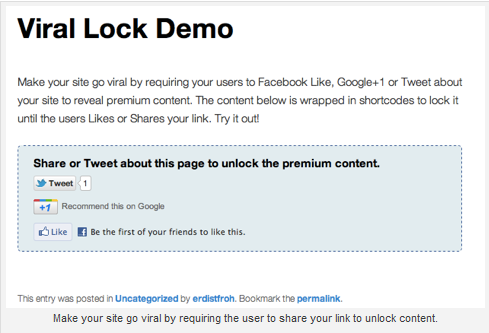As a new year of frosh carries their contagious excitement onto campuses worldwide, there is an opportunity for admissions departments to appreciate the changing climate of education marketing. This generation has become wary of the carefully crafted slogans and phrases that colleges attach to their brands, which eventually begin to sound indistinguishable for prospective students overwhelmed by an abundance of options. They want to hear from “authentic voices” they can trust. Fortunately, you can probably hear some of these voices around you right now – it’s easier than ever for your students to serve as online ambassadors for your school.
Student-generated content has become synonymous with social media marketing, but in actuality the strategy goes beyond typical Facebook, Twitter and YouTube initiatives. High-quality, relevant, valuable content not only develops credibility and engagement with your prospective students but is a fundamental component of search engine optimization (SEO). There are many avenues to improving content strategy and development, as touched on in previous blogs, but who better to sell your school online than those presently experiencing it?
Consider:
- Students know your culture and community better than anyone
- They’re a low-cost, easily accessible workforce
- Prospects, parents and alumni are eager to understand the real student experience
Encourage Social Media Engagement
While institutional websites are replacing traditional communication channels in many respects, they aren’t necessarily the first way that prospective students learn about your school. Independent websites such as ratemyprofessors.com or Wikipedia represent resources beyond institutional branding control, and prospects often enter a school’s website via admissions or program pages. Students are becoming more reliant on social media and blogs to get a better feel for a college’s culture and find answers to their questions. Leveraging social media marketing by providing easy access to your various channels on your website, encourages students and faculty to upload content that expands your reach. It isn’t enough to simply have a Facebook page – regularly updated student or graduate success stories, trivia questions, photos, videos and contests increase engagement while enhancing SEO for schools. Images are increasingly popular, and adding contextual text encourages students to add their responses.
Example: Concordia University has a solid social media presence and its website makes it easy for staff and students to contribute. It includes important policies and best practices for building and strengthening relationships “based on ongoing dialogue and mutual respect.”
Student-Generated Content Strategy
Integrating photos, videos, podcasts, tweets, blog posts and more into your communications takes some strategy. Students have their own priorities and schedules, and require some direction and management if they are to provide consistent, relevant, valuable content. If you intend to showcase this content on your website or a student-centric microsite, you may want to create a small editorial board of students who can generate ideas for new stories and other content that speaks to their demographic. You may already know some campus organization leaders, student ambassadors and insightful bloggers to get started, or else you can ask for samples and interview some candidates.
Set clear expectations regarding roles and responsibilities, and establish a workflow that simplifies the process. Provide school resources to get the job done, including perhaps medium-level access to administrative tools, ensuring there are some controls in place before making content “live” to the public. There should be a single go-to person to provide guidance and assistance while promoting brainstorming and a collaborative process. Depending on the nature of contributions, demonstrate your gratitude with compensation.
Keep it Real!
Leveraging peer-to-peer marketing to integrate your brand into the college lifestyle can’t be too heavy handed. Students will want to contribute to promoting a positive image of their school because it’s fun and a great opportunity to experiment with artistic and journalistic ventures. Graduate assistants, faculty members and alumni can also be valuable sources of content. Once you create the channels, there is unlimited potential for weaving together a complete and authentic picture of student life.
Example: The University of Alberta’s “InsideOut” microsite is an excellent gateway to its social media connection. Prospective students have numerous opportunities to interact with current students on the usual platforms, there are virtual tours, institutional and student blogs, news, photos, videos and podcasts. It makes a special effort to engage international students with interactive maps, specific advice, and other resources.
Control and Measure
Every piece of content created about your organization is automatically indexed by search engines, increasing the likelihood of being ranked first on Google and others. Blogs directly posted to your website with links to videos or other content can initiate dialogues, increasing link building, re-tweets and other sharing. Don’t forget to share your fresh, keyword-rich content on your other social media platforms for optimal exposure. Social sharing can even make some content “go viral” and amass millions of views within a short time. This type of wildfire proliferation brings definite risks as well as rewards but there are tools to help control or encourage it. For example, “unlock to share” plugins unlock additional content when your web visitors share your content on Facebook, Twitter or Google+. While everyone has a Like button on their site, plugins like this one at CodeCanyon allow you to provide extra incentive by giving the sharers access to extra goodies, such as discounts at a campus store.
Content is the fuel that drives engagement, keeping students and prospects coming back while all the time helping your SEO. You need to listen to what they want to hear! Measuring the success of your varied content on your website(s) and understanding which social media channels are funneling students to your site can be done with Google Analytics. Keep a lookout for the keywords and postings that are generating the most peaks and valleys in your traffic and adjust accordingly. A data-driven process ensures that your initiatives are working while showing you where to focus your efforts.
How does your school use student-generated content?








